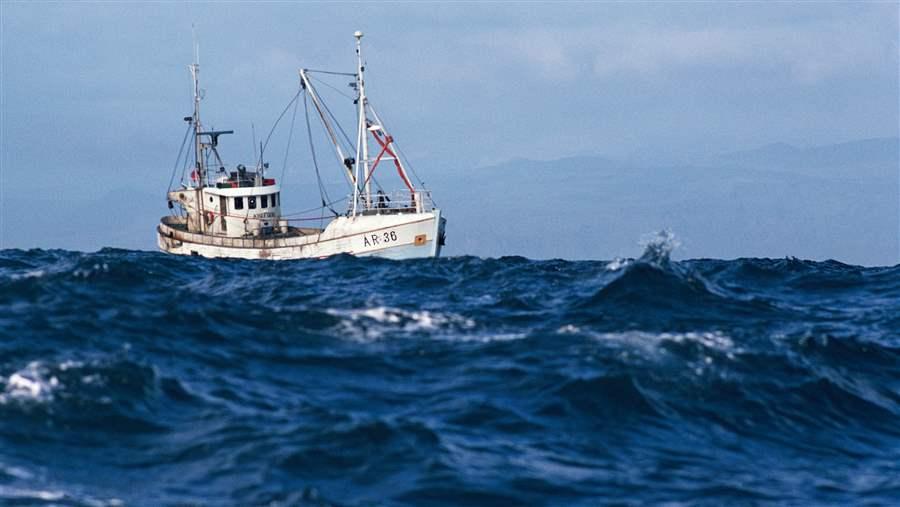New Paper Provides Pathway Forward on Treaty to Protect High Seas Biodiversity
 Getty Images
Getty ImagesFishing boat at sea.
When members of a United Nations Preparatory Committee meet for the first time in March 2016, they will begin crafting recommendations on elements of a new, legally binding instrument to conserve and sustainably use the high seas—marine areas beyond national jurisdiction, which make up 64 percent of the world's ocean and contain a wealth of biodiversity. A key provision of this treaty is expected to enable the use of area-based management tools in the open ocean, including marine protected areas, which would create a safe haven from harmful activities, particularly in sensitive or significant places.
But treaty negotiations are challenging, yearslong processes involving many stakeholders, opinions, and questions. Negotiators have a serious responsibility: They must develop an agreement that ensures the sustainability of the high seas and its resources for generations to come. And they must do so as part of a new treaty that operates in tandem with existing agreements and institutions, including the regional fisheries management organizations (RFMOs) that already exert some control over valuable global fisheries.
A new paper by Dire Tladi, a professor of international law at the University of Pretoria in South Africa and a member of the United Nations International Law Commission, offers solutions for integrating this new instrument for establishing marine protected areas (MPAs) into the existing governance and institutional framework. Published in the current issue of the International Journal of Marine and Coastal Law (Volume 30, Issue 4 of 2015), the article analyzes the limited potential for conflict between the mandates of the RFMOs and any new mechanism for establishing MPAs, and offers a thoughtful path forward to create MPAs on the high seas without undermining the RFMOs.
Because the RFMOs, like the International Commission for the Conservation of Atlantic Tunas, were set up to manage specific species rather than all of the biodiversity in a region, there is a gap in governments’ ability to protect high seas life. Professor Tladi suggests that the treaty could fill this role by establishing a process for recommending and implementing MPAs that would be tied to the protection of biodiversity as a whole and would also promote cooperation with the RFMOs. For example, if governments ratifying the high seas treaty agree to create an MPA in a region where an RFMO manages fish stocks, then that RFMO could adopt complementary fisheries management measures.
But, Tladi writes, “Concurrence [with a decision under the new treaty] will always be useful, but it is hardly necessary.” The new agreement and the RFMOs will continue to have very different mandates in terms of governance and conservation protocol, so one doing its job would not be in conflict with the other. However, the new instrument should strive to achieve close cooperation wherever possible and should provide an opportunity for existing institutions to put forward proposals and flag actual conflicts should they arise.
While the Preparatory Committee will no doubt see many more ideas about how a treaty can come together, this paper represents an important start to the conversation, and one that opens up many possibilities. According to Tladi, his outlined approach provides the potential for cooperation between the RFMOs and mechanisms under the new agreement, as well as “a real prospect for strong measures for conservation and sustainable use of marine biodiversity in areas beyond national jurisdiction.”







